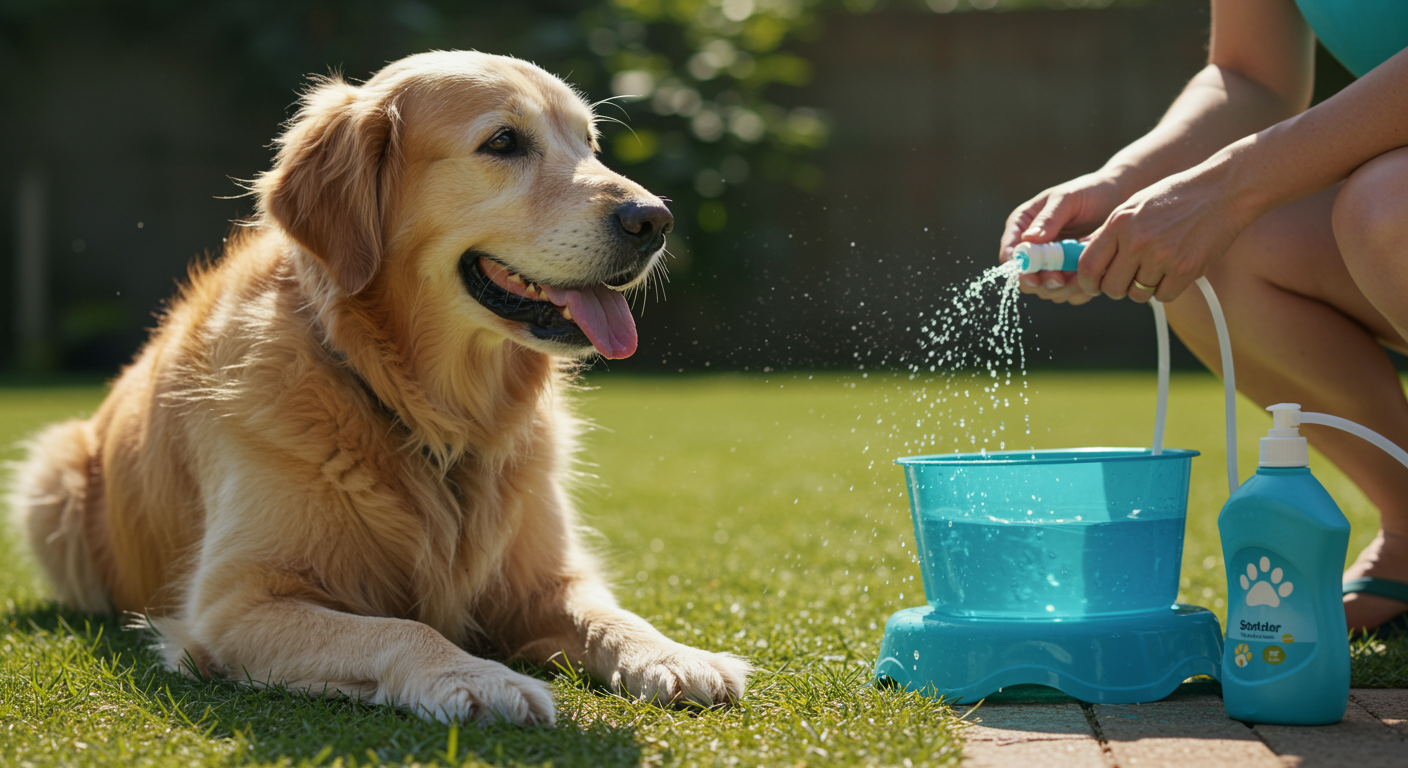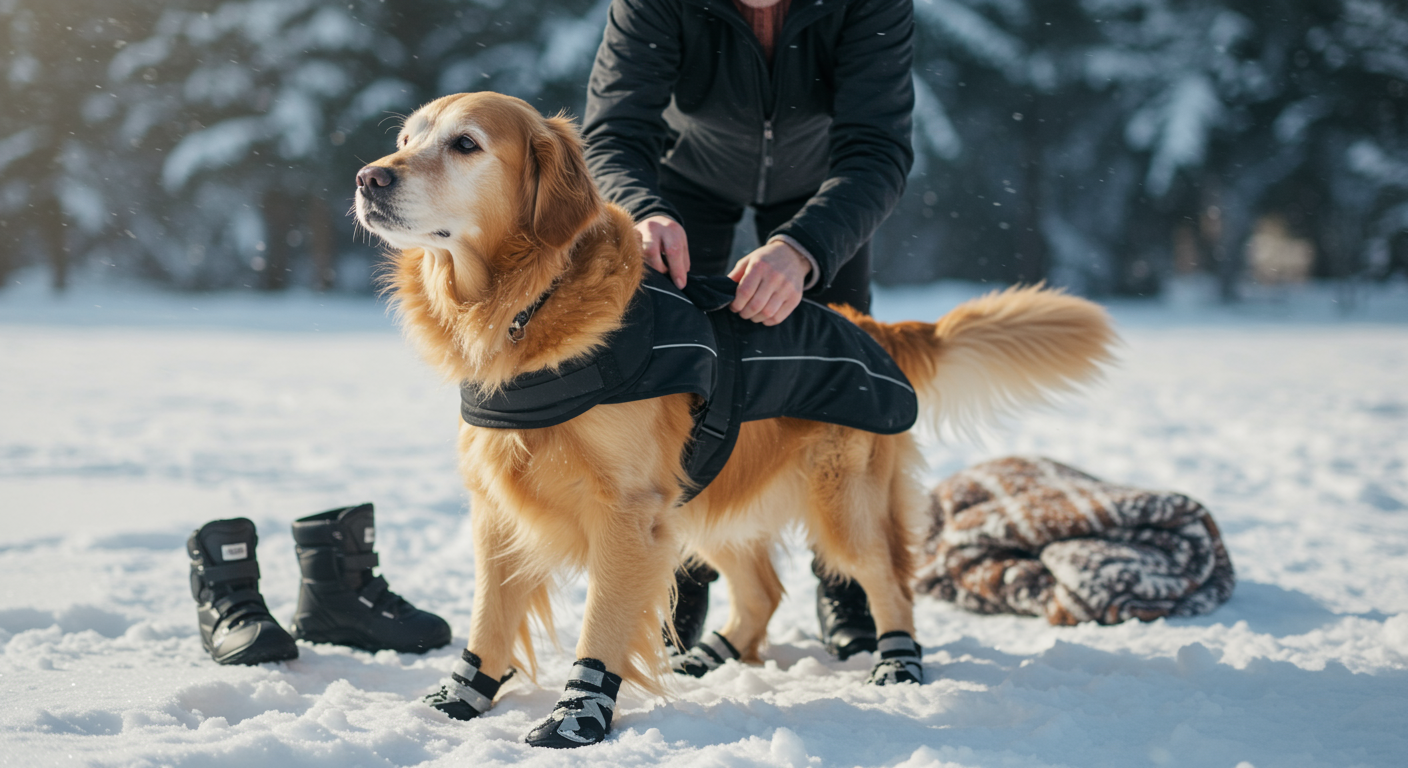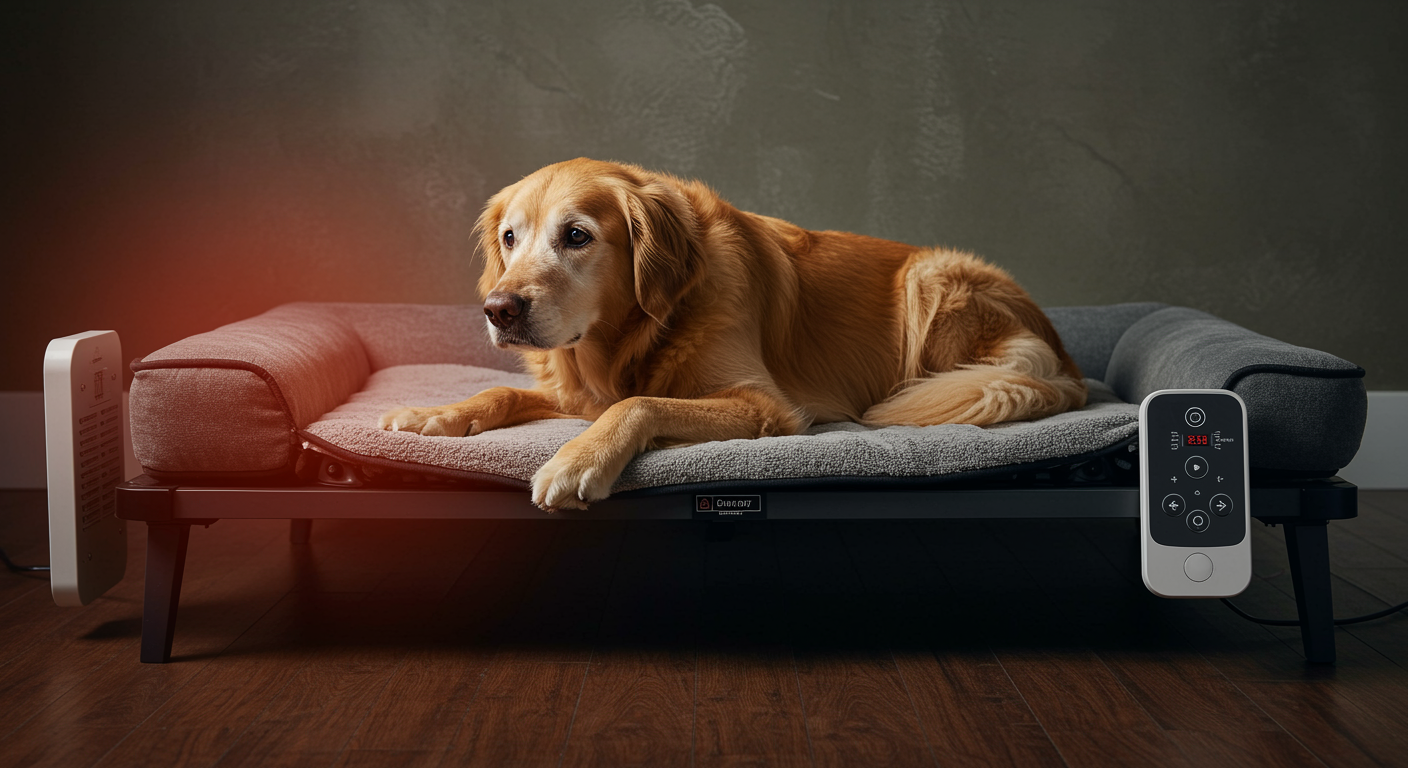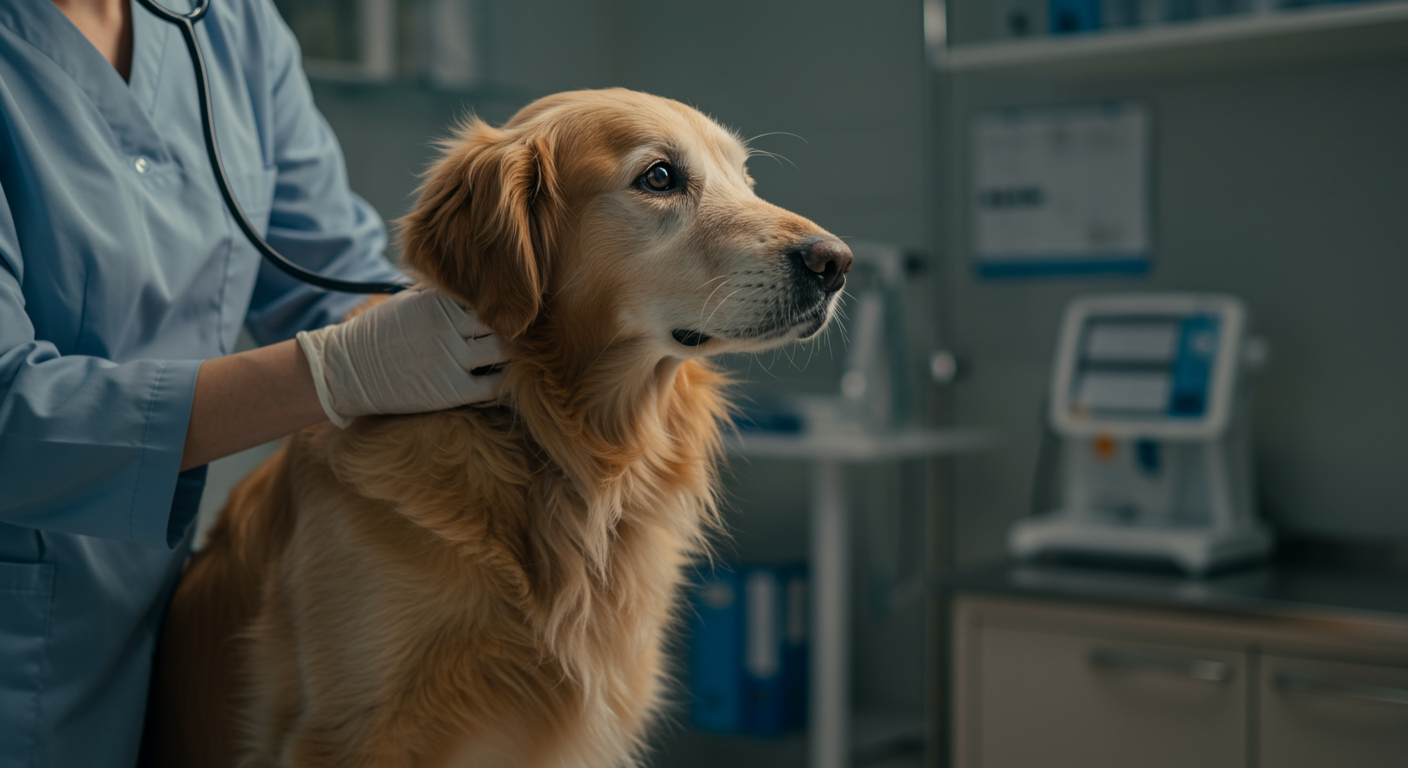Summer weather presents unique challenges for senior Golden Retrievers, whose aging bodies may struggle more with heat regulation, dehydration risks, and seasonal hazards that require specialized care and attention. Understanding these summer-specific needs helps families provide comprehensive protection that keeps their beloved companions safe, comfortable, and healthy throughout the warmer months.
Senior Golden Retrievers often experience decreased ability to regulate body temperature effectively, increased sensitivity to heat stress, and greater vulnerability to summer-related health issues such as dehydration, overheating, or paw pad burns from hot surfaces. Proactive summer care planning addresses these challenges while maintaining quality of life and activity enjoyment.
Effective summer care encompasses temperature management, hydration support, exercise timing modifications, sun protection, and environmental safety measures that support senior dogs through seasonal challenges while preserving their ability to enjoy outdoor activities and family time during warm weather periods.
Understanding Heat-Related Challenges for Senior Dogs
Temperature Regulation Difficulties
Age-Related Thermoregulation Changes
Senior Golden Retrievers experience decreased efficiency in temperature regulation due to changes in circulation, metabolism, and coat insulation that occur naturally with aging processes affecting their ability to cool themselves effectively.
Reduced cardiac function common in senior dogs can impact circulation needed for effective heat dissipation through panting and peripheral blood vessel dilation that helps regulate body temperature.
Understanding these physiological limitations helps families recognize that senior dogs may need additional cooling support and protection even in temperatures that previously caused no discomfort or concern.
Heat Stress Vulnerability
Senior dogs may show signs of heat stress at lower temperatures than younger dogs, requiring careful monitoring and intervention to prevent dangerous overheating during summer activities.
Medications commonly prescribed for senior dogs may affect temperature regulation or increase heat sensitivity, requiring additional precautions and modified activity approaches during warm weather.
Understanding individual heat tolerance helps guide appropriate activity planning and protection measures that respect the dog’s changing capabilities while maintaining summer enjoyment.
Physiological Risk Factors
Cardiovascular Stress
Hot weather places additional stress on the cardiovascular system as the body works harder to regulate temperature through increased heart rate and circulation adjustments that may be challenging for senior dogs.
Pre-existing heart conditions common in senior Golden Retrievers can be exacerbated by heat stress, making temperature management crucial for maintaining cardiovascular health and comfort.
Understanding the connection between heat exposure and cardiovascular stress helps families prioritize cooling strategies and activity modifications that protect heart health during summer months.
Respiratory Challenges
Senior dogs may have reduced respiratory efficiency due to age-related changes or existing conditions, making the increased breathing required for temperature regulation more difficult and potentially stressful.
Thick double coats that provide insulation can become burdensome during hot weather, trapping heat and making cooling through panting less effective for temperature regulation.
Understanding respiratory limitations helps guide grooming decisions and cooling strategies that support effective temperature regulation without compromising coat health or protection.
Heat Prevention and Cooling Strategies
Environmental Temperature Management
Indoor Climate Control
Maintaining cool, comfortable indoor temperatures provides essential relief from outdoor heat while creating safe retreat areas where senior dogs can recover from heat exposure and maintain comfortable body temperatures.
Air conditioning, fans, or evaporative cooling systems help create comfortable indoor environments that support temperature regulation while providing refuge during peak heat periods.
Understanding optimal indoor temperature ranges for senior dogs helps balance comfort with energy efficiency while ensuring adequate cooling support during summer months.
Outdoor Shade and Protection
Creating shaded outdoor areas using umbrellas, canopies, or natural shade allows senior dogs to enjoy outdoor time while protecting them from direct sun exposure that can quickly lead to overheating.
Understanding that ground temperature can be significantly higher than air temperature helps guide decisions about outdoor surface contact and the need for protective measures or alternative areas.
Portable shade solutions enable flexibility in outdoor activities while ensuring that cooling options are available regardless of natural shade availability in different locations.
Active Cooling Techniques
Water-Based Cooling
Providing access to kiddie pools, sprinklers, or other water features allows senior dogs to cool themselves through wading, drinking, or simply enjoying water contact that helps lower body temperature.
Wet towels applied to the neck, chest, and paw areas provide targeted cooling that helps regulate body temperature while being gentle enough for sensitive senior skin.
Understanding safe cooling methods helps distinguish between effective temperature reduction and potentially dangerous rapid cooling that could cause shock or other complications.
Summer Care Management Guide
| Care Aspect | Prevention Strategies | Daily Management | Emergency Signs | Action Required |
|---|---|---|---|---|
| Heat Protection | Shade provision, indoor cooling | Temperature monitoring, activity timing | Excessive panting, drooling, weakness | Move to cool area, offer water, vet contact |
| Hydration Support | Multiple water sources, fresh supply | Encourage drinking, monitor intake | Dry gums, lethargy, decreased urination | Immediate hydration, veterinary attention |
| Paw Protection | Avoid hot surfaces, protective booties | Surface temperature testing | Limping, excessive licking, visible burns | Cool water rinse, veterinary examination |
| Exercise Adaptation | Early morning/evening activities | Shorter sessions, frequent breaks | Reluctance to move, heavy panting | Stop activity, provide cooling, rest |
| Sun Protection | Limit exposure, protective clothing | Apply safe sunscreen to exposed areas | Red skin, excessive heat on touch | Move to shade, cooling measures |
| Grooming Support | Professional summer cuts, regular brushing | Daily coat checks, mat prevention | Overheating despite precautions | Consider coat thinning, cooling aids |
Exercise and Activity Modifications
Timing Adjustments
Optimal Activity Periods
Early morning and evening hours provide cooler temperatures that allow for exercise and outdoor activities while avoiding the peak heat periods that can be dangerous for senior dogs.
Understanding temperature patterns throughout the day helps families plan activities during the safest times while ensuring that senior dogs still receive necessary exercise and mental stimulation.
Flexible scheduling allows for adaptation to particularly hot days or heat waves when even typically cooler periods may be too warm for safe outdoor activity.
Duration and Intensity Modifications
Shorter, more frequent activity sessions help maintain fitness and enjoyment while preventing overexertion that could lead to overheating or heat-related health problems.
Reducing activity intensity during hot weather helps ensure that exercise remains beneficial while respecting the increased challenge that heat places on senior dog physiology.
Understanding individual tolerance levels helps guide activity modifications that maintain engagement while prioritizing safety and comfort during summer months.
Alternative Exercise Options
Indoor Activities
Air-conditioned indoor spaces provide safe exercise environments when outdoor temperatures are too high for comfortable or safe activity, ensuring consistent fitness maintenance.
Indoor swimming facilities or hydrotherapy centers offer excellent exercise opportunities that provide cooling benefits while supporting joint health and muscle maintenance.
Understanding indoor exercise alternatives helps maintain activity routines regardless of outdoor temperature extremes or heat warnings that make outdoor exercise inadvisable.
Water-Based Activities
Swimming or wading activities provide excellent exercise while offering natural cooling benefits that help regulate body temperature during physical activity.
Beach or lake activities can provide enjoyable exercise opportunities when timed appropriately and combined with adequate shade and hydration support for safety.
Understanding water safety and supervision requirements helps ensure that water activities remain beneficial and enjoyable while preventing accidents or overexertion.
Hydration and Nutrition Support
Water Access and Encouragement
Hydration Station Setup
Multiple water sources throughout indoor and outdoor areas ensure constant access to fresh, cool water that encourages regular drinking and supports proper hydration levels.
Elevated water bowls may be more comfortable for senior dogs while fountains or moving water features can encourage drinking through increased appeal and freshness.
Understanding hydration needs during hot weather helps guide water provision strategies that support increased fluid requirements without overwhelming senior dogs.
Encouraging Water Intake
Flavoring water with low-sodium broth or adding ice cubes can make drinking more appealing while providing additional cooling benefits during hot weather periods.
Wet food or moisture-rich treats help supplement hydration through nutrition while providing enjoyable ways to increase fluid intake beyond plain water consumption.
Understanding hydration indicators helps families monitor fluid intake and identify when additional encouragement or intervention may be necessary for maintaining proper hydration.
Nutritional Adaptations
Feeding Schedule Adjustments
Feeding during cooler parts of the day helps prevent additional heat generation from digestion while maintaining appetite that may be reduced during hot weather.
Smaller, more frequent meals may be easier to digest during hot weather while preventing the additional body heat generated by processing large meals.
Understanding how heat affects appetite and digestion helps guide feeding strategies that maintain nutrition while respecting seasonal changes in eating patterns.
Cooling Foods and Treats
Frozen treats made from dog-safe ingredients provide enjoyable cooling while offering nutritional benefits and mental stimulation during hot weather periods.
Fresh fruits and vegetables safe for dogs can provide hydration and cooling while offering healthy treat alternatives that support summer nutrition needs.
Understanding safe cooling treat options helps families provide enjoyable temperature relief while maintaining dietary appropriateness and nutritional balance.
Sun Protection and Skin Care
UV Protection Strategies
Sunscreen Application
Dog-safe sunscreen applied to exposed skin areas such as nose tips, ear edges, and belly areas helps prevent sunburn that can be particularly problematic for senior dogs with sensitive skin.
Understanding appropriate sunscreen selection and application helps ensure protection without causing skin irritation or toxicity from inappropriate products designed for human use.
Regular reapplication during extended outdoor exposure helps maintain protection while ensuring that coverage remains effective throughout activity periods.
Physical Sun Protection
Protective clothing designed for dogs can provide sun protection while offering cooling benefits through light-colored, breathable materials that reflect heat rather than absorbing it.
Limiting direct sun exposure during peak UV hours helps prevent skin damage while reducing heat exposure that can contribute to overheating problems.
Understanding sun protection needs helps guide outdoor activity planning that balances sun safety with exercise and enjoyment requirements.
Skin Health Maintenance
Summer Grooming Needs
Regular brushing helps remove excess coat that can trap heat while maintaining coat health and preventing matting that could worsen heat retention problems.
Professional grooming with summer cuts can help senior dogs stay cooler while maintaining coat protection and appearance appropriate for their lifestyle and comfort needs.
Understanding grooming adaptations helps balance heat management with coat protection needs while maintaining skin health throughout summer months.
Skin Condition Monitoring
Daily skin checks help identify sun damage, hot spots, or irritation early when treatment can be most effective in preventing serious skin problems.
Understanding normal versus concerning skin changes helps families distinguish between minor summer-related issues and problems requiring professional veterinary attention.
Gentle skin care products designed for dogs help maintain skin health while providing relief from minor irritation or dryness that may occur during summer months.
Environmental Safety and Hazard Prevention
Surface Temperature Awareness
Hot Pavement and Surface Risks
Testing surface temperatures with bare hands helps determine whether surfaces are safe for paw contact, with surfaces too hot for human hands being dangerous for dog paws.
Protective booties or paw balms can provide protection from hot surfaces when alternative routes aren’t available, though shade and cooler surfaces are preferable.
Understanding surface heating patterns helps families plan routes and timing that avoid dangerous temperature exposure while maintaining access to necessary areas.
Seasonal Hazard Management
Pool and Water Safety
Swimming pool safety requires constant supervision and gradual introduction for senior dogs who may have reduced swimming ability or confidence compared to their younger years.
Understanding pool safety equipment such as ramps or flotation devices helps ensure that water activities remain safe and enjoyable rather than stressful or dangerous.
Chemical exposure from treated pools or water features requires post-swimming rinsing to prevent skin irritation or toxic ingestion from grooming behaviors.
Insect and Pest Protection
Increased insect activity during summer months requires protection strategies that prevent bites, stings, or pest-related diseases that could affect senior dog health.
Understanding safe insect repellent options helps protect senior dogs without causing skin irritation or toxicity from inappropriate products or application methods.
Regular pest prevention including flea, tick, and heartworm prevention becomes particularly important during active summer months when exposure risks are highest.
Health Monitoring and Emergency Preparedness
Heat-Related Illness Recognition
Early Warning Signs
Recognizing early signs of heat stress such as excessive panting, drooling, or seeking cool areas helps intervene before heat-related illness becomes serious or life-threatening.
Understanding progression from heat stress to heat exhaustion to heat stroke helps families recognize when immediate cooling measures are needed versus when emergency veterinary care is required.
Behavioral changes such as restlessness, confusion, or lethargy may indicate developing heat-related problems requiring immediate attention and intervention.
Emergency Response Protocols
Knowing appropriate cooling techniques such as applying cool water to paw pads, providing air circulation, and offering small amounts of cool water helps provide immediate aid.
Understanding when home cooling measures are sufficient versus when immediate veterinary attention is necessary helps ensure appropriate response to heat-related emergencies.
Having emergency contact information readily available helps ensure prompt professional care when heat-related illness requires immediate medical intervention.
Professional Care Coordination
Veterinary Consultation
Pre-summer veterinary consultations help identify senior dogs at increased risk for heat-related problems while providing guidance for safe summer care strategies.
Understanding medication effects on heat tolerance helps guide activity and protection planning while ensuring that necessary treatments don’t compromise summer safety.
Regular check-ups during summer months help monitor senior dog health while addressing any heat-related issues before they become serious problems.
Quality of Life Maintenance
Comfort and Enjoyment Balance
Maintaining Summer Activities
Finding ways to preserve enjoyable summer activities through appropriate modifications helps ensure that senior Golden Retrievers continue to experience seasonal pleasures safely.
Understanding individual preferences and limitations helps guide activity selection that maintains engagement while respecting heat sensitivity and safety requirements.
Creating positive summer experiences through appropriate protection and timing helps senior dogs continue to enjoy warm weather while staying safe and comfortable.
Family Integration
Including senior dogs in family summer activities through appropriate accommodations helps maintain their social connections while ensuring their safety and comfort.
Understanding adaptation strategies helps families continue to include senior dogs in outdoor gatherings, travel, or activities while providing necessary protection and care.
Balancing inclusion with safety helps ensure that senior dogs remain valued family members while receiving appropriate protection during summer activities.
Special summer care for senior Golden Retrievers requires proactive planning, environmental modifications, and heightened attention to heat-related risks that become more significant with age. Through comprehensive temperature management, hydration support, and safety precautions, families can help their senior companions enjoy summer months while staying safe and comfortable.
Success in summer care comes from understanding individual heat sensitivity, preparing proactively for temperature challenges, and maintaining flexibility in activities while prioritizing safety and comfort throughout hot weather periods. With proper attention and care, senior Golden Retrievers can continue to enjoy summer activities while receiving appropriate protection from seasonal hazards.
The investment in comprehensive summer care demonstrates the ongoing commitment to senior dog welfare while ensuring that the golden years remain filled with safe, comfortable, and enjoyable seasonal experiences shared with their beloved families.

Rafael Souza is a digital marketing strategist and lifelong dog enthusiast. Passionate about Golden Retrievers, he shares practical, research-based tips to help owners provide healthier and happier lives for their furry companions.





